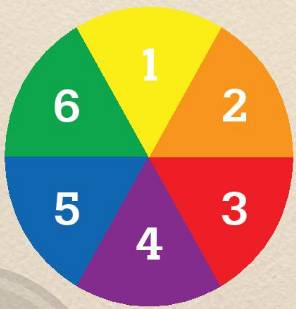Do you remember what we call a red, yellow, blue and other colours? (Hint: It sounds like 'you'.)
Hãy nhập câu hỏi của bạn vào đây, nếu là tài khoản VIP, bạn sẽ được ưu tiên trả lời.


1 Yellow and purple are complementary colours.
2 Blue and red are primary colours.
3 A vibrant colour is bright and strong.
4 Green and yellow are harmonious colours.
5 Orange and purple are secondary colours.
6 A pastel colour is pale and soft.
$HaNa$
1. complementary
2. primary
3. vibrant
4. harmonious
5. secondary
6. pastel
My favorite color is yellow, I associate it with the sun, a beautiful sunflower.

Đáp án B
Kiến thức: Đọc hiểu
Giải thích:
Màu vàng được sử dụng để làm nổi bật thông tin trong một văn bản vì
A. nó là một màu sắc quan trọng.
C. nó là một màu dễ nhận thấy.
B. nó có thể được dùng để cảnh báo mọi người.
D. người ta thích màu này hơn màu khác.
Thông tin: This highly visible shade is found on everything from school buses to traffic signs and pens that we use to highlight important information in a text. The colour is also used to caution people

Đáp án A
Kiến thức: Đọc hiểu
Giải thích:
Từ "they" dùng để chỉ
A. người tiền sử B. màu sắc
C. thực vật D. xanh đậm
“they” dùng để chỉ “early humans”
Early humans saw a variety of natural colours around them, from the browns and greens of the soil and plants to the deep blues and red of the sky. They painted their bodies with colours from nature to signal aggression toward an enemy, or to make themselves attractive to a mate.
Người tiền sử nhìn thấy nhiều màu sắc tự nhiên xung quanh họ, từ màu nâu, màu xanh lá cây của đất và của cây cối đến màu xanh thẫm và màu đỏ của bầu trời. Họ vẽ thân thể của mình với màu sắc từ tự nhiên để đánh dấu sự xâm lược đối với kẻ thù, hoặc để làm cho mình hấp dẫn với một người bạn đời.

Đáp án B
Kiến thức: Đọc hiểu
Giải thích:
Theo đoạn văn, màu đỏ
A. được tin rằng làm cho người ta xấu hổ
B. mang lại lợi thế cho các thành viên trong nhóm mặc nó
C. tượng trưng cho sự không may mắn
D. làm cho người ta ít hăng hái
Thông tin: Researchers have discovered that in sports the team that is wearing red is more likely to win. Why? Because red seems to be the color that signals dominance, giving those dressed in red an advantage in sporting events.

;-;;;; what?